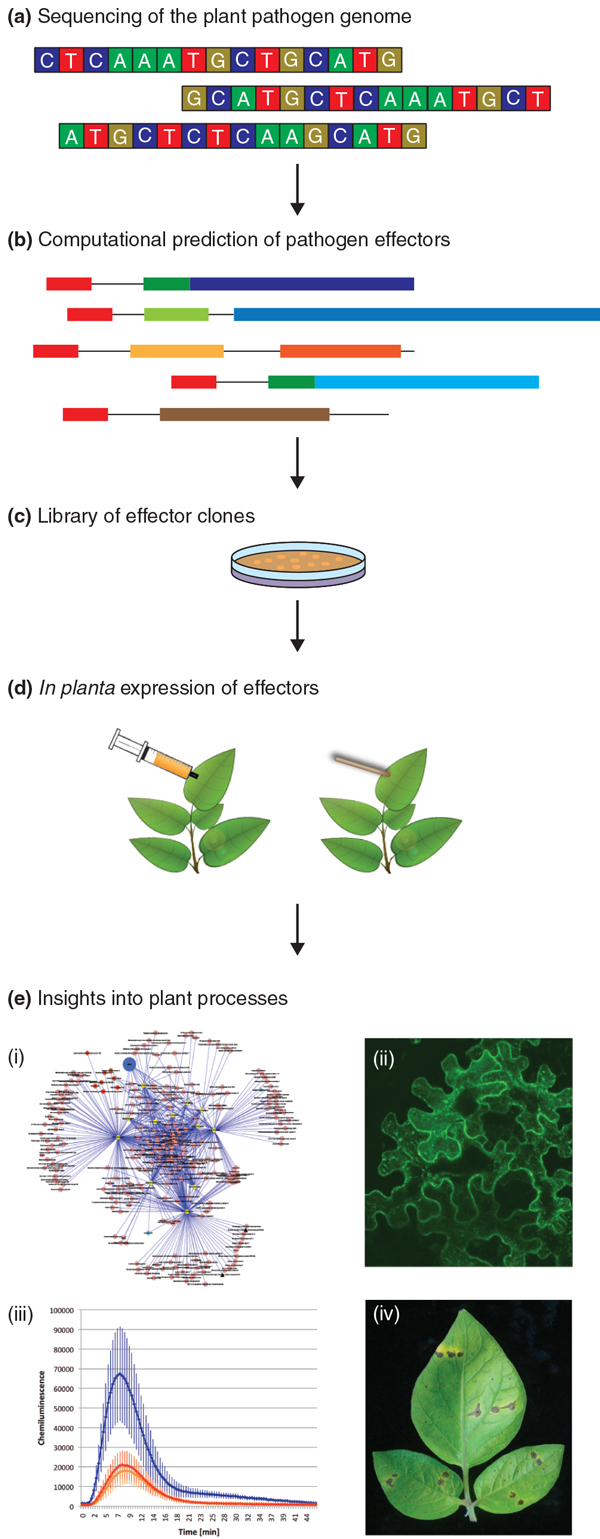Figure 1.
High-throughput pipeline for using plant pathogen effectors to unravel plant processes. (a) Genome sequences are currently available for a variety of plant pathogens. (b) This allows the computational prediction of candidate effector genes using the knowledge gained from characterized effector proteins. In the case of Phytophthora pathogens, prediction is facilitated by the presence of effector genes in gene-sparse, repeat-rich regions of the genomes, and by the modular structure of effectors. (c) Cloning of these effector genes and (d) expression of candidate effectors in planta using Agrobacterium-mediated transient expression systems such as agroinfiltration (left) and wound inoculation (right). (e) These help us understand diverse plant processes. For instance, (i) identification of host proteins that interact with pathogen effectors can give insights into the plant pathways targeted and perturbed during the infection process. (ii) In addition, effectors can be used as molecular probes to study the structural changes that occur during plant infection at a subcellular level. For instance, effectors can be fused to fluorescent proteins to assess their localization in planta. (iii) The suppression of plant immune responses such as the production of reactive oxygen species (ROS) can also be studied. Blue line shows induction of ROS by flagellin peptide in the absence of effector proteins. This ROS burst is reduced (red) by the expression of an oomycete effector. (iv) The activation of host immunity by effector proteins helps the dissection of plant susceptibility and resistance mechanisms. For example, the hypersensitive response (brown spots on leaves) against effectors transiently expressed in planta can be used to identify immune receptors (R genes) of high value for plant breeding.

